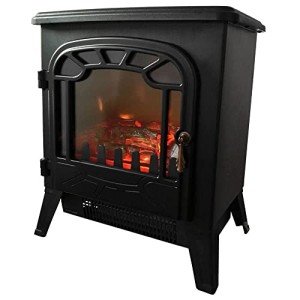The Charm and Functionality of Fireplaces: A Comprehensive Guide
Fireplaces have long been a main function in homes, symbolizing heat, friendship, and convenience. Electric Fireplaces UK come in various styles, products, and fuel types, dealing with the preferences and needs of varied homeowners. Cheap Fireplace Online explores the complex world of fireplaces, exploring their history, types, setup considerations, and upkeep suggestions, while providing FAQs to resolve common inquiries.
A Brief History of Fireplaces
Historically, fireplaces functioned as the cornerstone for cooking and heating homes. In ancient times, an open hearth was frequently placed in the center of a dwelling. Over centuries, architectural developments facilitated the advancement of more advanced styles, developing from easy stone structures to elaborate mantels that preside over modern living areas.
Key Historical Milestones:
- Ancient Times: Open fires in caverns and primitive huts for warmth and cooking.
- Middle Ages: Large, typically centralized chimney structures in excellent halls of castles.
- Renaissance: Decorative mantels and styles gain appeal, with the fireplace becoming a sign of wealth and status.
- Industrial Revolution: Advancements in materials and producing enable a more comprehensive variety of fireplace styles.
- Modern Era: Gas and electric fireplaces become prevalent, enabling for increased benefit and safety.
Types of Fireplaces
Today, many kinds of fireplaces are available, each with its distinct characteristics. Below is a breakdown of the most typical types:
| Fireplace Type | Description | Pros | Cons |
|---|---|---|---|
| Wood-Burning | Traditional fireplaces sustained by wood. | Authentic experience, heat output. | Labor-intensive, requires correct venting/maintenance. |
| Gas | Fireplaces that use gas or gas. | Easy to utilize and maintain. | Less atmosphere compared to wood. |
| Electric | Uses electrical power to generate heat and flames. | Safe, no venting required. | Minimal heat output, higher energy expenses. |
| Bioethanol | Utilizes bioethanol fuel, producing tidy flames. | Environmentally friendly, portable. | Needs regular refueling. |
| Pellet | Utilizes compressed wood pellets as fuel. | Tidy burning, sustainable. | Requires power for operation. |
Additional Considerations
When choosing a fireplace, it is important to think about aspects such as:
- Fuel Availability: Consider what fuels are readily available in your area.
- Space and Aesthetics: The size of your living location and your design choices ought to guide your choice.
- Structure Regulations: Always consult regional regulations to ensure compliance and safety.
Installation Considerations
Setting up a fireplace includes more than simply placing a structure in your house. Thorough preparation, expert input, and adherence to security codes are paramount. Here are some important steps:
- Planning: Consider the size and kind of fireplace, where it will be placed, and its intended use.
- Assessment: Hire a certified specialist to examine your home and guarantee proper setup.
- Allows: Obtain any necessary building authorizations from regional authorities.
- Products: Select suitable products for the fireplace and surrounding location. Ensure they are fire-resistant and designed for your fuel type.
Upkeep Tips for Fireplaces
Routine maintenance guarantees your fireplace operates safely and effectively. Here are important upkeep pointers categorized by fireplace type:
Wood-Burning Fireplaces
- Chimney Cleaning: Have your chimney cleaned up yearly to avoid creosote accumulation.
- Check for Damage: Check for fractures and damage to the firebox and chimney structure.
- Firewood Storage: Store fire wood far from your house to prevent pest problems.
Gas Fireplaces
- Log Inspection: Regularly analyze ceramic logs for cracks and replace if required.
- Vent Cleaning: Ensure that vents are devoid of blockages.
- Pilot Burner Check: Test pilot lights and ignition systems frequently.
Electric Fireplaces
- Cable Inspection: Frequently check electrical cords for tearing or wear.
- Tidy Surfaces: Wipe down surface areas frequently to eliminate dust and particles.
- Smoke Detectors: Ensure smoke alarm in the vicinity are practical.
Bioethanol and Pellet Fireplaces
- Fuel Storage: Store fuels in a cool, dry location far from direct sunshine.
- Regular Refueling: Monitor fuel levels and refuel as needed.
- Ventilation: Ensure proper ventilation when using these fireplaces.
Frequently asked questions About Fireplaces
Q1: Do I need an authorization to install a fireplace?
Yes, many towns need licenses for fireplace setups to ensure security and compliance with regional structure codes.
Q2: How often should I clean my chimney?
It is suggested to have your chimney cleaned at least once a year, specifically if you use your fireplace regularly.
Q3: Can I transform a wood-burning fireplace to gas?
Yes, many property owners convert wood-burning fireplaces to gas for benefit, but speaking with an expert is recommended to make sure a correct conversion.
Q4: Do electric fireplaces produce heat?
Yes, electric fireplaces can produce heat; nevertheless, their main function is typically for ambiance, making them a suitable choice for those who desire a fire look without substantial heating.
Q5: Are bioethanol fireplaces safe?
Bioethanol fireplaces are typically safe when utilized properly; nevertheless, they need correct ventilation, and users ought to follow all manufacturer guidelines.
Fireplaces not only add visual interest homes but also offer useful heating solutions. With various types, styles, and upkeep requirements, homeowners can make educated choices that best match their needs and way of lives. Whether choosing for the charm of a wood-burning fireplace or the convenience of a gas design, a fireplace can considerably enhance a home's comfort and atmosphere. As the hearth stays a focal point in homes, it continues to cultivate heat, conversation, and connections amongst friends and family.

